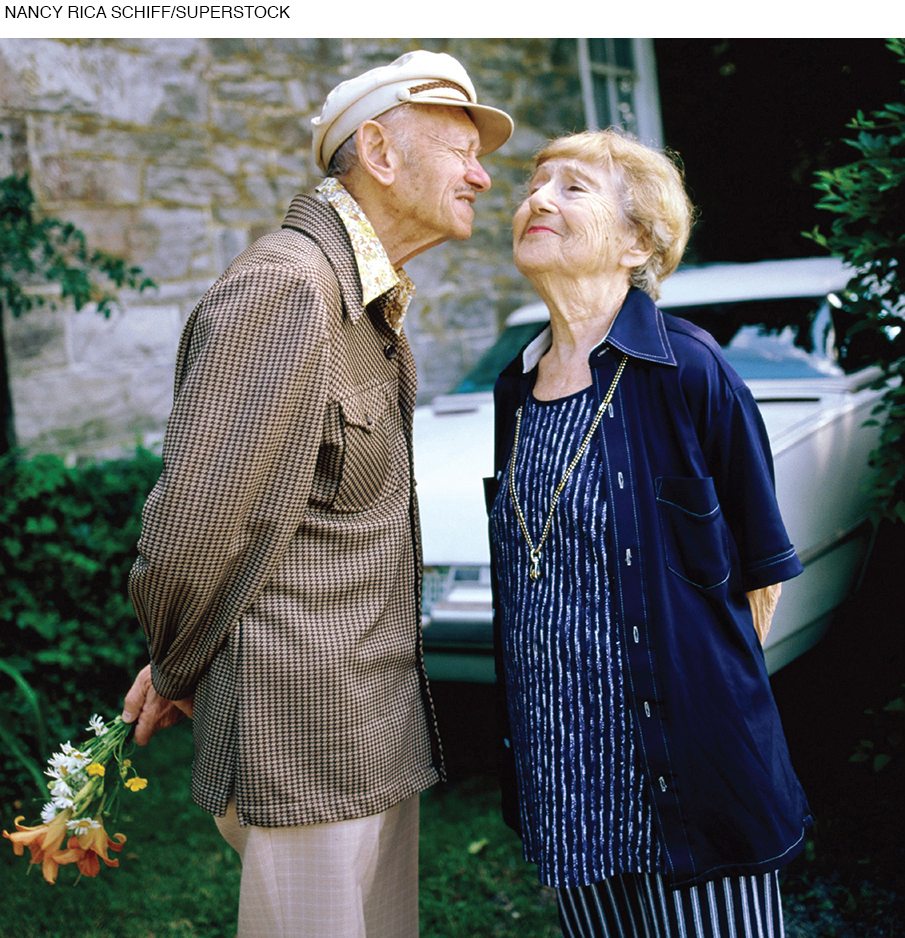Chapter Introduction

CHAPTER OUTLINE
Self Theories
OPPOSING PERSPECTIVES: Too Sweet or Too Sad?
Stratification Theories
Working
Home Sweet Home
Religious Involvement
Political Activity
Long-
Relationships with Younger Generations
Friendship
Activities of Daily Life
Whose Responsibility?
Preventing Frailty
A VIEW FROM SCIENCE: Leave the Bedroom
Mental Capacity
A CASE TO STUDY: Family Encouraging Confusion
Caring for the Frail Elderly
CHAPTER 15
Late Adulthood
The Social World
WHAT WILL YOU KNOW?
Do older people become more sad or more hopeful?
Do the elderly want to move to a distant, warm place?
What do adult children owe their elderly parents?
Is home care better than nursing-
home care?
Video: Late Adulthood Psychosocial Development: A Brief Overview
Almost every week I walk through a park with my friend Doris, a widow in her 80s, to a meeting we both attend. Many people of all backgrounds greet her by name, including men who play chess on a park table and a woman who owns a nearby hotel. Doris is an icon for street performers, including Colin, who plays his piano (on wheels) outside on sunny days. The police ticketed him for not having a permit.
Doris organized a protest. She got Community Board 2 (she is the oldest member, reappointed by the City Council every two years since 1964) to pass a resolution about free speech. The city withdrew the ticket, and the Parks Department revised their policy.
We walk slowly because Doris greets babies, birds, and other animals. Squirrels scamper up to grab peanuts from her hand, and sometimes pigeons perch on her arm. Doris dresses well, appropriate for each season. One hot August day I was surprised that she wore a long-
Often we stop at the mailbox to drop in a timely greeting card: I have become one of hundreds on her list. Colorful envelopes arrive in my box—

Usually friends have much in common, but I am unlike Doris. I never send cards, feed squirrels, or protect pianists (although Doris did get me to help Colin). We belong to opposing political parties. She has no children; I have four.
How did we become friends? Seven years ago, Doris had knee surgery and needed volunteers to wheel her to her many meetings, appointments, and social engagements. Dozens of people offered their services. I did, too. Soon Doris could walk alone with her walker, but I have come to enjoy her anecdotes, her memories, her attitudes. I watch for cars when we cross the street, but I get more from Doris than I give. And I am not referring to Thanksgiving cards.
Recently Doris broke her hip. The rehab center soon put her in a private room because her younger roommate complained that Doris had too many visitors all day long. They came because they like her, not because they agree with her. She often is the sole dissenting vote on Community Board resolutions, yet everyone respects her.
Back at home, Doris continues to be active, social, and appreciated by many. Her life defies stereotyping, which makes her an illustration of the theme of this chapter: the variability and complexity of development in later life. Some of the elderly are frail, lonely, and vulnerable because of private circumstances and public failures. For most, however, psychosocial development includes working and socializing, concern for others as well as self-